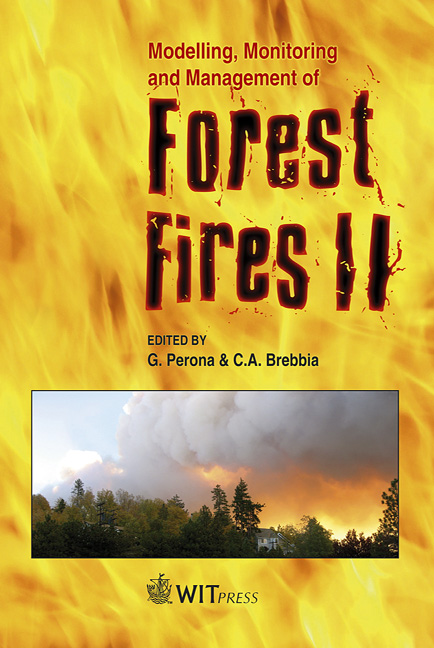Assessing Burn Severity Using Satellite Time Series
Price
Free (open access)
Transaction
Volume
137
Pages
12
Page Range
107 - 118
Published
2010
Size
695 kb
Paper DOI
10.2495/FIVA100101
Copyright
WIT Press
Author(s)
S. Veraverbeke, S. Lhermitte, W. Verstraeten & R. Goossens
Abstract
In this study a multi-temporal differenced Normalized Burn Ratio (dNBRMT) is presented to assess burn severity of the 2007 Peloponnese (Greece) wildfires. Eight-day composites were created using the daily near infrared (NIR) and mid infrared (MIR) reflectance products of the Moderate Resolution Imaging Spectroradiometer (MODIS). Prior to the calculation of the dNBRMT, a pixel-based control plot selection procedure was initiated for each burned pixel based on time series similarity of the pre-fire year 2006 to estimate the spatio-temporal NBR dynamics in the case that no fire event would have occurred. The dNBRMT is defined as the one-year post-fire integrated difference between the NBR values of the control and focal pixels. As such, the dNBRMT accounts for both the direct fire impact and vegetation responses. The dNBRMT, based on coarse resolution imagery with a high temporal frequency, has the potential to become either a valuable complement to fine resolution Landsat dNBR mapping or an imperative option for assessing burn severity at a continental to global scale. Keywords: differenced normalized burn ratio, fire severity, burn severity, MODIS, multi-temporal, vegetation regeneration, remote sensing. 1 Introduction Wildfires play an integral role in the ecological functioning of many ecosystems, as they partially or completely remove the vegetation layer and affect post-fire vegetation composition. The assessment of post-fire effects is a major challenge
Keywords
differenced normalized burn ratio, fire severity, burn severity, MODIS, multi-temporal, vegetation regeneration, remote sensing





